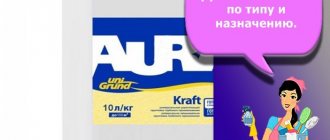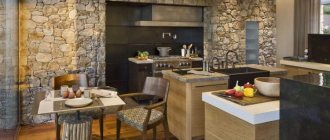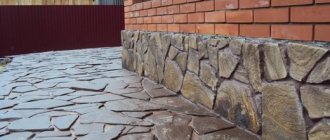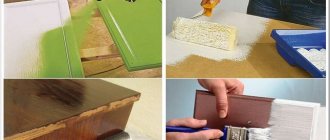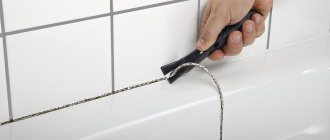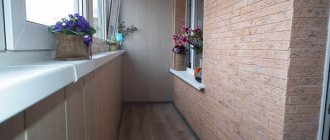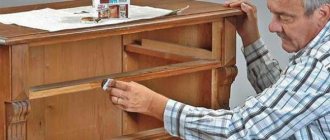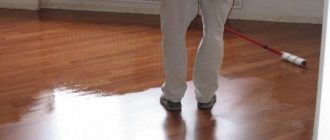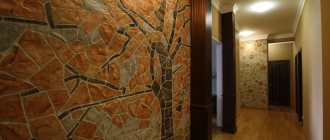Artificial acrylic stone is a very durable and resistant material that is increasingly used in our homes. Beautiful countertops, window sills and sinks are made from it. But even such a durable material is subject to wear and tear in the form of abrasions, scratches and chips.
The service of polishing artificial stone may also be required after several years of operation of the object to give the surface a perfectly smooth state and eliminate dust particles that inevitably accumulate in the micropores of the stone.
To restore its original and attractive appearance, you need to know how to polish an artificial stone countertop at home.
How to polish an artificial countertop can be determined after diagnosing its condition. The deeper the damage, the larger the abrasive for artificial stone should be.
How to polish an artificial stone countertop
Polishing an artificial stone countertop and calling a specialist to your home is not a cheap procedure. Kitchen surfaces are quite often subject to scratches, which spoil the appearance of the entire room and the mood of the housewife.
An acrylic tabletop is good because it is almost impossible to ruin it, but cases vary. And therefore, if you have a master with golden hands in your family, restoring the original appearance of the surface is quite possible.
Polishing is carried out “wet”; the surface must be moistened to remove dust and reduce the heating temperature from friction of the abrasive.
With a little skill, you can sand and polish it at home. First you need to decide what tools and materials you will need. By following the necessary technological process and adhering to the recommendations of specialists, you will return the countertop to a smooth and beautiful surface.
Products made from quartz agglomerate are very difficult to grind. It is almost impossible to do it at home. Therefore, such work should be trusted to professionals.
Polishing artificial stone in Moscow
It is almost impossible to achieve a perfect result using home remedies and devices; in addition, you can cause even more damage to the product, in which case the cost of repairs will increase significantly.
To polish acrylic or quartz stone, our company’s specialists use high-tech equipment and modern professional tools. Treating surfaces with complex polishing compounds helps smooth and seal microcracks, scratches and impart a mirror shine. The work is done using:
- discs and wheels for grinding;
- profile and end mills;
- specialized adhesives and polishing compounds.
After such a professional restoration, the owners will only have to maintain the achieved result and enjoy the beauty of the interior for many years.
To order a visit from a specialist to assess the condition of surfaces and clarify prices for repair work in Moscow, you can call us or leave a request on the website.
Required Tools
Before starting work, first prepare the tools you will need and approximately calculate the set of consumables.
It is quite possible that it will not be possible to repair the working surface on site; dismantling and removal to a specially equipped workshop will be required.
The main operation is grinding. We choose a tool for grinding - an angle grinder, an electric angle grinder, in common parlance we call it an angle grinder. In most cases, we install cutting wheels and cut metal with a grinder. But here we will use it for its original purpose.
Shallow scratches, chips and cracks can be completely restored independently, without contacting a specialist. The main thing is not to delay repairs and immediately respond to even small, barely noticeable damage.
A grinder will be necessary when sanding large areas, for example, completely sanding the entire countertop.
Restoring and processing stone requires accuracy, diligence and a sense of proportion, which comes with experience.
For polishing, grinding wheels should be used, which have different sizes: 115, 125, 150 and 180 mm. Don't make a mistake when choosing your diameter in the store.
Polishing is carried out “wet”; the surface must be moistened to remove dust and reduce the heating temperature from friction of the abrasive.
As an alternative to a grinder, you can use a regular electric drill. Grinding accessories are also sold for the drill, both individually and in whole sets of various configurations. But it is more difficult to maintain a grinding plane with a drill when working with large areas. However, in small areas, spot grinding with a drill can be done quite well.
Immediately before grinding, it is necessary to clean the surface of the countertop, since dirt causes the abrasive stone to deteriorate faster, which is why the polishing process will take longer and cost longer.
Depending on the type of damage, you may need wheel, whisk, or cup brushes. Abrasive wheels are hard or soft with abrasive from P120 (coarse) to P1500 (fine grinding). For subsequent polishing after grinding, diamond wheels, felt wheels and cotton wheels are used. Final polishing (to a mirror) is carried out with the addition of polishing wax or GOI paste.
You should work carefully, without pressing hard: try to grind with even pressure at all points.
If you have no grinding experience, you should consider water cooling the stone using a regular spray bottle of water.
As a finishing treatment, you need to use a special polyester composition, having previously degreased the surface.
How to choose polishes
By gradually increasing the power, we get the desired effect: the paste and remaining water will be distributed over the countertop, filling in minor defects and making it uniform.
When choosing a polishing agent for artificial stone countertops, consider several parameters:
- The color of your countertop, the palette of artificial stone is very diverse and when you come to the store, you should know what color you need.
- The natural color of the stone implies a colorless polish.
- Consider what kind of surface you want as a result: matte, glossy or semi-matte.
A matte countertop has less glare, small defects are less noticeable and is easier to maintain.Semi-matte - implies a bright color with a slight shine, it does not require maintenance.
The gloss is a chic mirror surface, but all stains and abrasions are immediately visible, which needs to be polished regularly.
The more glossy the surface is expected after polishing, the finer the abrasive used.
Artificial stones: what they are, main types and properties
The answer to the question, what is artificial stone: an imitation of natural stone, which is produced by industry, and it happens that some craftsmen pour it at home. The base is resin, colored concrete, gypsum, and stone chips. With the right choice, this is a practical, easy-to-maintain, durable option for making countertops using vibration pressing, vibratory casting, or bulk method.
You can view photos of ARTIFICIAL STONE TABLETOPS HERE >>
Acrylic stone
Acrylic stone (solid surface) is a modern composite material. It was invented by DuPont scientists in 1967 and patented under the Corian brand in 1968. The main components of artificial stone are acrylic resins Methyl methacrylate (MMA) and Polymethyl methacrylate (PMMA or acrylic resin), aluminum hydroxide, natural mineral fillers and pigment additives. Often called simply artificial stone. Acrylic resin is one of the most expensive components of acrylic stone, which provides its strength, durability and aesthetic qualities. The more it is in the composition, the more expensive and better the stone.
Acrylic stone can be thermoformed, making it possible to make countertops with curved shapes and rounded corners. The cut piece of stone is heated to 150-175 °C. When it becomes flexible, give it the desired shape and fix it until it cools.
In the production of this composite, a polymer resin made from acrylic/methacrylic acid ester is used. The solution is transparent even after hardening (does not hide the color and texture of the stone), unless pigment is added to it. Often used to imitate natural marble. Also, its texture can be similar to granite, be solid and monochromatic, or include pieces of glass or mirror. Electric or daylight plays beautifully with sparkles inside the material.
The standard dimensions of acrylic slabs are 3680x760 mm with a thickness of 12 mm. Sold by linear meters (in reality it is approximately 920x760mm).
Popular brands of acrylic stone (viewing the stones of these manufacturers is available via the link on each of them)
DuPont Corian
Grandex
Hanex
LG Hi-Macs
Samsung Staron
Tristone
The price of acrylic stone products starts from 5,600 rubles per linear meter.
Advantages of acrylic:
- There are no micropores, so bacteria do not multiply on it
- Does not emit harmful substances, recommended for use in children's institutions and hospitals
- Large selection of colors and textures: from plain to imitating granite and marble
- Durable material, difficult to chip
- Withstands short-term exposure to high temperatures
Polyester stone
The only difference between this option and the acrylic composite is the absence of acrylates in the composition. This eliminates the possibility of bending the finished product; complex shapes cannot be made. Polyester composite is produced in various colors and textures. Exposure to high temperatures: do not place anything hot on it. It is not as durable as quartz agglomerate and may be scratched. The surface can be glossy or matte. Its price is lower than that of acrylic and quartz. It is made on the basis of polyester resins, like quartz agglomerate, but it is more fragile, because unlike quartz with a thickness of 20 mm, the thickness of polyester stone is only 12 mm.
Popular brands of polyester stone:
DuPont Montelli
Neomarm
Bienstone
The price of products made of polyester stone starts from 4,000 tr per linear meter.
Quartz agglomerate
To produce quartz agglomerate, vibration pressing technology under high temperatures is used. The solution contains 90% quartz sand, approximately 5% polyester resin and 1% paint. This is an extremely hard material that is not inferior in strength to granite, but does not have hidden flaws within itself, such as cavities or microcracks. It is very environmentally friendly and has the appropriate certificates. It is recommended for use in medical and children's institutions. The agglomerate serves for decades. It does not need to be coated with any impregnation, unlike natural marble. The most expensive and hardest of all artificial types of stones.
Popular brands of quartz agglomerate:
Avant Quartz
Caesarstone
Cambria
Etna Quartz
Plazastone (no longer available)
Samsung Radianz
Silestone
TechniStone
Vicostone
The most budget-friendly quartz option is Avant Quartz. The most expensive brands are the Spanish Silestone and the American Cambria.
The price of a quartz product is calculated based on the cutting of parts on the slab. The dimensions of the quartz slab are 3050x1440 mm. But there are larger slabs, for example Etna Quartz 3200x1600 mm. The thickness is usually 20 mm, but it can also be 30 (a third more expensive). Some types are made 12 mm thick, but they should be used only as decorative wall panels or other products that are not subject to heavy loads. A tabletop thickness of more than 2 cm is achieved by gluing it onto an MDF sheet. However, this does not affect the price in any way. A strip of stone is glued along the end at an angle of 45 degrees.
Sold in whole slabs or halves (3040x720 mm).
Advantages of quartz agglomerate:
- The entire material is homogeneous, there are no hidden cavities or cracks in it, unlike natural stone
- Durable as granite. Hardness on the Mohs scale is 7
- Eco-friendly: chemically and radiation inert
- Convenient to use: you can cut food on it without using a cutting board and place hot dishes
- Easy to clean: no additional impregnation is needed, just wipe it with a damp cloth and ordinary household chemicals
- Perfectly imitates granite and marble: even a master will not immediately determine whether the stone in front of him is natural or artificial
Liquid stone
This material is in high demand, called cast/liquid granite, marble. This is no ordinary composite. It is sprayed onto MDF (chipboard), the layer thickness does not exceed 4 mm. The working surface is cheap, the spray form is held in place by resin and gelcoat. It smells bad for years - like chemicals. Not environmentally friendly.
After manufacturing the product, it is necessary to keep it in a “bath” (temperature chamber) at a temperature of 60 degrees for at least three days in order for the harmful gas: styrene to escape. Only a few companies have such equipment, but most manufacturers do not follow the technology. If such treatment was not carried out, toxins will be released into the air for 5-6 years. We do not recommend ordering countertops made of liquid stone, because the layer of outer material itself is only a few millimeters. The remaining thickness of the product is made up of various resins and mineral impurities for hardening and retaining volume.
Often, liquid stone is applied to plywood or MDF to create the desired thickness. This material is applied into a special mold using an attack of gelcut gel and other chemicals with granules and dyes that imitate the texture of stone. Then the surface is sanded.
Disadvantages of liquid stone:
- No natural ingredients. It is not a stone, but a completely chemical substance. It is harmful to health because cheap components are used in production.
- Evaporates harmful styrene compounds. It destroys the liver and other human organs. Vapors are released due to butanox, which is needed for polymerization (solidification) of the product.
- Not durable, since the “stone” layer is only a couple of millimeters. The rest is resin, MDF.
These disadvantages of liquid stone appeared after the advent of technology from the USA. High-quality components began to be replaced with cheap analogues. For example, aluminum hydroxide is replaced with calcite, which can be bought on the market or on the Internet and is cheap. You can make such a surface with your own hands in the garage literally on your knee. And high-quality technology in Russian conditions resulted in hack work produced by half-educated craftsmen. Without proper firing, styrene will poison the air for years. And even after processing in special “baths”, only half of the harmful compounds are neutralized.
Seam processing
If your countertop is not made of solid stone, then you need to process the seams and make them invisible. The main stages of seam repair:
- Clean and wash the seams with soapy water.
- Sand the seam with abrasive paper folded in half, a scraper or scraper and remove the dust.
- When working at home, it is better to choose a ready-made grout composition, focusing on the color of your countertop.
- Fill the joint with grout using a special gun or rubber spatula.
- Avoid getting the mixture on the stone; if necessary, remove excess with a damp cloth. Wait for it to dry completely according to the instructions on the package and you can start sanding.
One of the key advantages of artificial stone is the possibility of restoration: with the necessary skills and tools, you can eliminate even deep cracks and chips, and shallow scratches can be removed even easier by polishing.
When is sanding necessary?
If an acrylic, quartz countertop or product made from other types of artificial stone is actively used, even with high-quality care, its smooth surface can turn into “shabby.” Typically, owners find the following defects:
- the appearance of microcracks due to impacts;
- chips, roughness;
- the appearance of dark spots, traces of hot dishes.
It is in this case that a grinding procedure is required. It is important to note that only part of the product should not be processed - because of this, its color and texture most often become heterogeneous. Our specialists process the entire countertop. It is also not recommended to try to save the coating from damage yourself: without sufficient experience and special equipment, you can only ruin the artificial stone.
Cost of sanding countertops
| Service | Price from | Unit |
| Metering | 2500 rub. | service |
| Delivery | 3500 rub. | PC. |
| Additional measurement | 2500 rub. | service |
| Additional visit of the installation team | 5000 rub. | service |
| Minimum order value | 35,000 rub. | agreement |
* The price is a guide and cannot be used as a guideline when drawing up an estimate for a specific project. For a detailed and accurate calculation, please contact the company manager.
Grinding steps
Assess the condition of the countertop surface:
- If there are chips, then it is necessary to grind to the base of the largest one, usually 3-4 mm.
- Large scratches are sanded down to 1-2 mm; if there are only small abrasions, the sanding steps can be shortened and the surface can simply be cleaned a little. The larger and deeper the scratches, the more sanding steps will need to be completed.
Gradual grinding of the surface of the tabletop with changing abrasive wheels is necessary to prepare for the next stage, namely polishing.
Important! When working with artificial stone, grind the entire surface as a whole, and not separately problem areas, otherwise you will not achieve the integrity of color and texture.
Each subsequent grit softens the surface, replacing large scratches with much smaller ones.
Grinding is carried out in several stages. Before starting the first stage, thoroughly rinse the surface from grease and dirt with a detergent, otherwise the grease will get into the pores of the stone and the polishing will turn out to be of poor quality.
During use, countertops acquire a certain layer of dirt and grease, which must be removed using special cleaning products.
Main grinding steps:
- Start sanding with a coarser abrasive, as if rubbing out the largest scratches and chips.
- When grinding, it is necessary to control the pressure on the stone so that notches do not form.
- Do not forget to wet the surface with water to make the abrasive glide over the stone more easily.
- Change the abrasive fraction to a finer one and sand the surface several times with decreasing fraction, usually from three to seven stages.
Each operation can take five to ten minutes or an hour and a half. It all depends on how deep the scratches and chips are on the product!
Upon completion of all stages of grinding, you should have a rough matte surface of the stone with small abrasions.
Among other things, artificial stone polishing is divided according to the type of surface: matte, glossy and semi-matte.
Technologies, production
In acrylic composite production, resins are mixed with additives, and the resulting mass is poured into molds. The thickness of the acrylic slab is 12 mm. The thickness of the finished product depends on the installation location: kitchen countertops are made with a thickness of 20 mm. This is achieved by gluing an acrylic sheet onto an MDF panel. A strip of stone runs along the end. The joint is invisible to the naked eye. Dimensions 3650x760 mm. Sizes may vary depending on brand. Acrylic thickness 12 mm. Sold by linear meters (acrylic in one linear meter is 920x760 mm).
To process acrylic stone, you can use equipment that is available in many woodworking shops - milling and grinding machines, circular saws. In this case, the power tool must be suitable for working under heavy duty conditions, and the cutter teeth and cutting discs must be made of carbide materials. There are also specialized devices for making countertops from acrylic stone.
Before starting work, you should check that the sheets of material do not differ in color. It is advisable to use sheets of the same series. It is necessary to carefully study the drawing and draw up a cutting plan, taking into account 3 mm tolerances for the final fit of the product. The cutting must be done so that the seams are perpendicular or parallel to the edge of the sheet. The joints are reinforced by gluing strips of material 5-10 cm wide from below.
Before gluing the sheets, you should check what the joint looks like from the outside. For gluing, two sheets are placed at a distance of several millimeters from each other, the seam is filled with glue, the sheets are adjusted to each other and secured with clamps, without tightening too much. To make the seam stronger, a strip of the same material 5-10 cm wide is glued from below along the entire length of the seam. For gluing, a special glue is used, selected for the given color of the stone according to the correspondence table.
The next stage is making the edge. A groove is made on the tabletop, an edge is inserted into it and glued. I use cutters of different shapes and get a beautiful decorative edge with a variety of profiles.
The base for the tabletop is made from moisture-resistant wood boards or moisture-resistant wood plywood. It is glued to the acrylic surface with an adhesive composition that remains elastic after hardening.
Acrylic stone can be thermoformed, making it possible to make countertops with curved shapes and rounded corners. The cut piece of stone is heated to 150-175 °C. When it becomes flexible, give it the desired shape and fix it until it cools. The heating time of the stone is determined using special tables.
Processing of artificial stone is completed by grinding and polishing. Before starting work, thoroughly wipe the surface with a cloth soaked in soapy water. Grinding is performed by sequentially moving from rougher to smoother.
Features and stages of polishing
Glossy surfaces for kitchen countertops are very rare. Therefore, in the kitchen, matte countertops are most often used, which are not so susceptible to damage, and the color chosen for such countertops is white or light, which perfectly hides small scratches.
Polishing is a less labor-intensive process that you can do regularly to maintain the appearance of your DIY surface.
The powder must be rubbed in until the appropriate shine appears. You can also use a paste with water-repellent properties.
Product polishing stages:
- Before starting the process, it is necessary to thoroughly wash the tabletop from dust after sanding.
- Lightly moisten the surface of the stone and the polishing sponge with water and apply the polishing compound to the entire countertop using soft circular movements, a thin, uniform film should form.
- Wait until the composition dries a little, is absorbed into the stone, and begin to rub it evenly over the countertop.
- Repeat the procedure if necessary, but usually one or two rubs are enough.
As a result, you will get a smooth, shiny surface.
At the final stage, the marble countertop can be coated with liquid wax. It will protect the surface from mechanical influences. If you want to enhance the protective properties of the wax, apply a crystallizer, which, among other things, provides shine.
General recommendations for caring for countertops
Artificial stone is a very durable material, but it requires compliance with certain rules of use that will help maintain its integrity and beauty.
Do not allow hot pots or pans to come into direct contact with the countertop as this may damage the work surface.
To avoid a time-consuming repair process, it is best to prevent scratches, chips and stains.
After removing stains from the countertop, rinse the surface thoroughly with clean water and dry with a soft cloth or paper towel to prevent stains.
Follow the recommendations of specialists for use and care, and it will not disappoint you and will serve for a long time. There are several reasons for the polishing of the surface array to fail:
- Do not place hot pots and pans on the countertop; use special trivets for hot items.
- If liquid gets on the surface, remove it immediately, do not allow the stain to dry, which will then be difficult to remove.
- Do not use powders and pastes with abrasive substances that scratch the surface for cleaning; it is better to use special cleaning products for stone.
- Avoid contact with various acids on the surface of the countertop - a reaction will occur with the polish, the stain will be absorbed into the stone and then grinding will no longer be necessary.
- In case of normal contamination, wash the countertop immediately, do not let it dry. If this happens, soak the stain with soapy water and wash with warm water and ammonia - ten drops per liter of water.
- When cleaning, use only soft cloths and sponges to avoid damaging the coating.
- For minor scratches and obvious marks on the surface, you can get by with a special impregnation that will partially restore the integrity of the stone.
If the shine has decreased, scratches or stains have appeared on hard surfaces after prolonged use, this is NOT a manufacturing defect, but is considered normal wear and tear. The tabletop can be re-sanded and polished.
When making repairs, follow our advice, then the procedure for restoring the beauty of your countertop will not be very tedious. And the stone surface will always delight the owner of the house with its natural beauty and ease of use.
